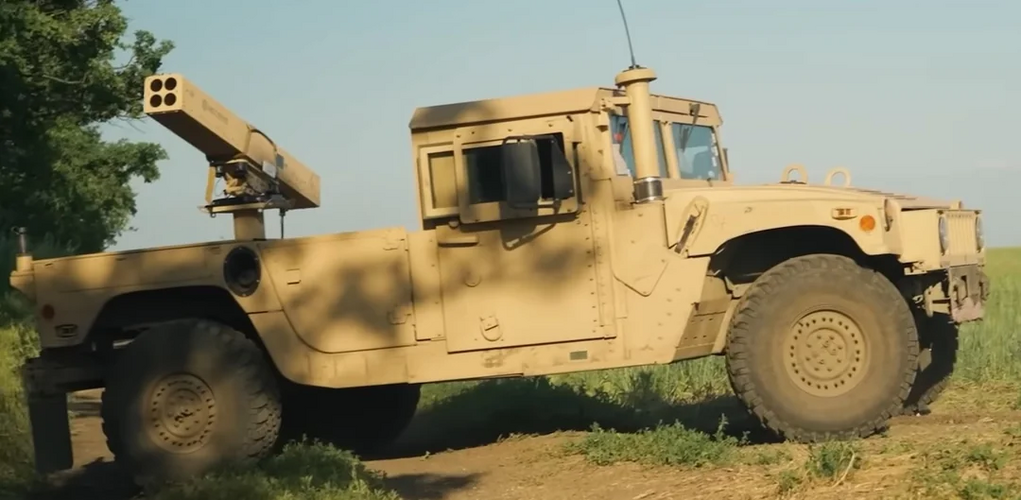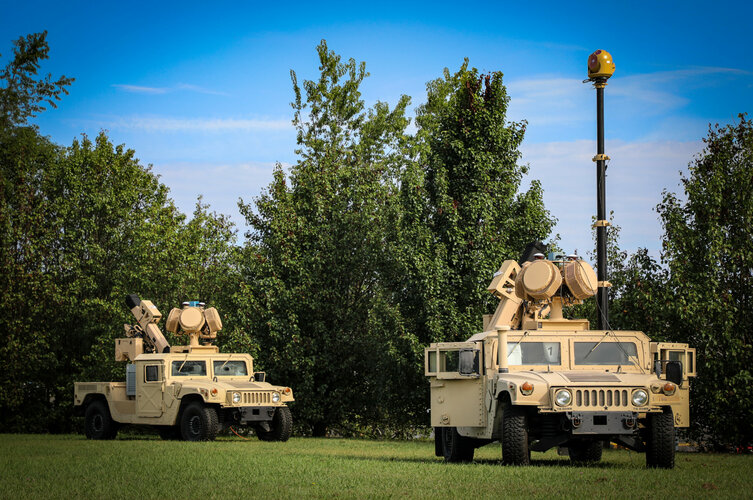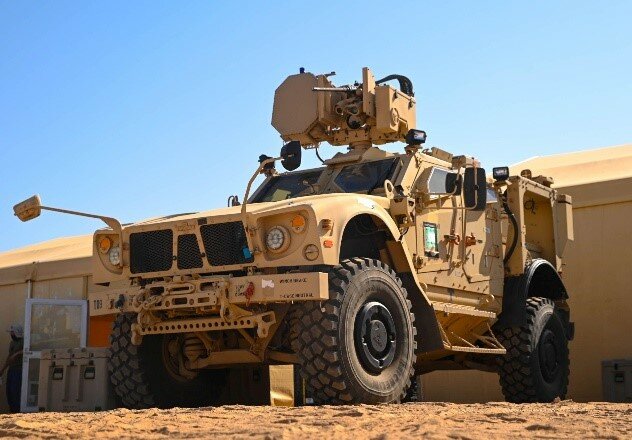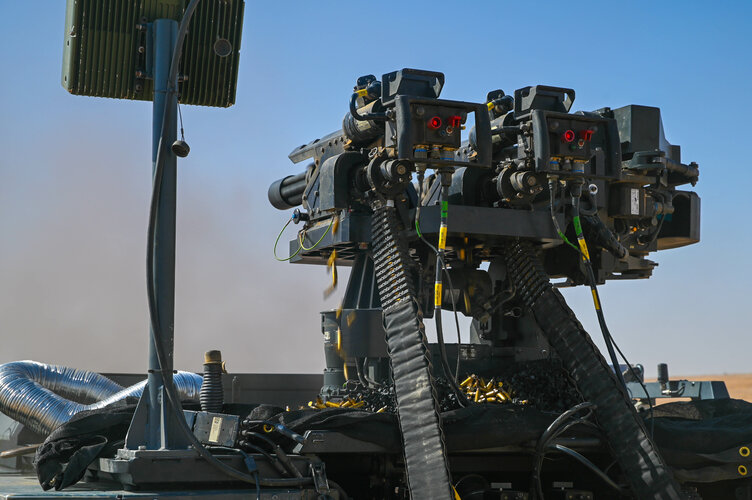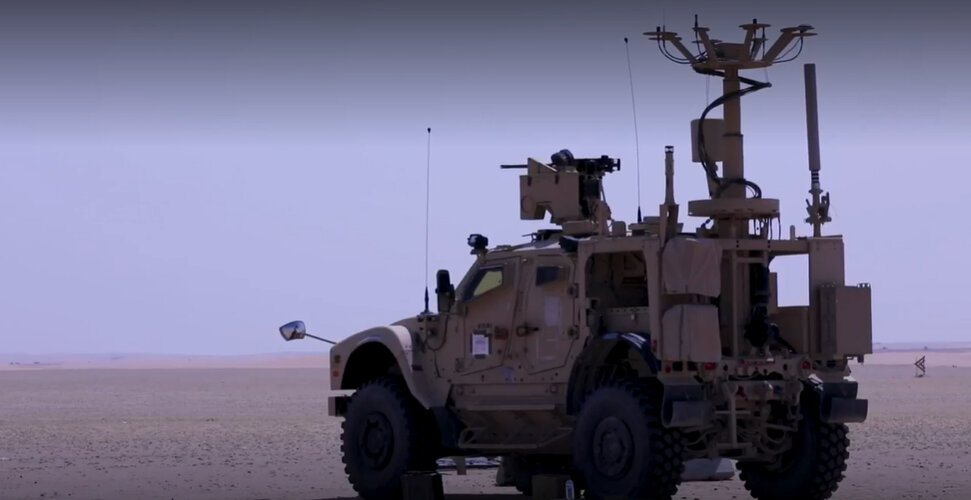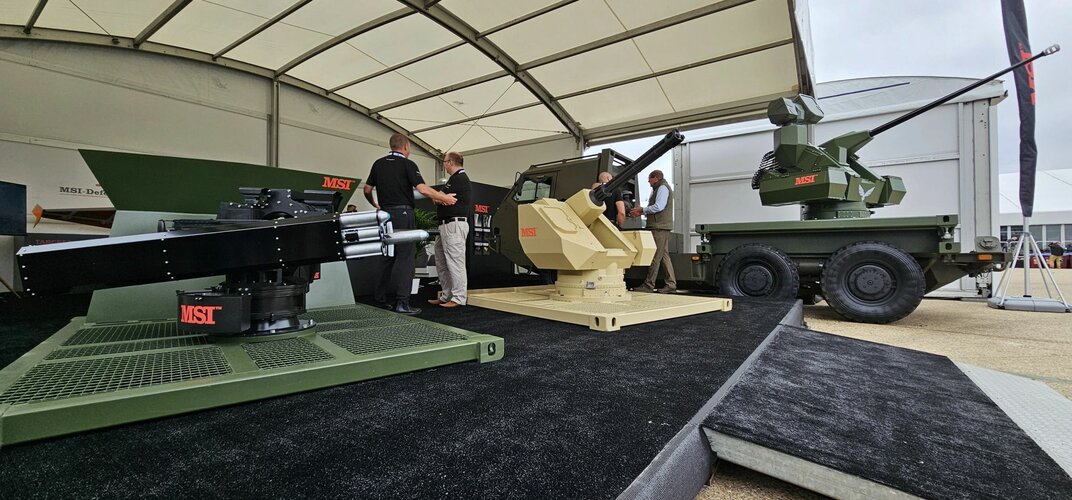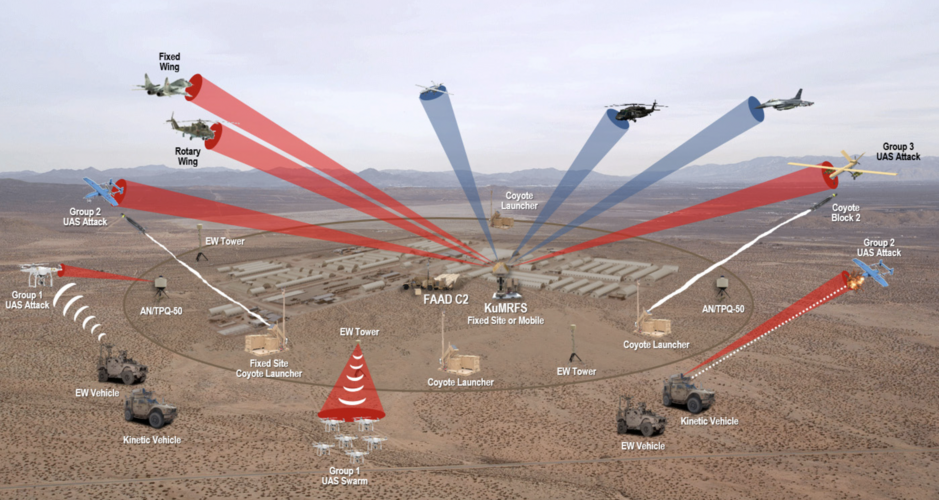Non-kinetic Coyote aces US Army test
YUMA PROVING GROUND, Ariz., (July 21, 2021) — Raytheon Missiles & Defense, a Raytheon Technologies business, successfully defeated a swarm of drones with its reusable Coyote® Block 3 non-kinetic effector during a U.S. Army test. The demonstration moves the variant closer to deployment.
Derived from the expendable
Coyote loitering munition, the Block 3 utilizes a non-kinetic warhead to neutralize enemy drones, reducing potential collateral damage. Unlike its expendable counterpart, the non-kinetic variant can be recovered, refurbished and reused without leaving the battlefield.
“This test demonstrates the effectiveness of Coyote to counter complex, unmanned aircraft systems,” said Tom Laliberty, vice president of Land Warfare & Air Defense at Raytheon Missiles & Defense. “As a non-kinetic variant, we’re offering an effective weapon against the threat and value to the Army in the form of an affordable, reusable asset.”
During the test, the Coyote engaged and defeated a swarm of 10 drones that differed in size, complexity, maneuverability and range. It achieved several significant firsts:
• Air-to-air non-kinetic defeats;
• Survivability, recovery, refurbishment and reuse during the same test event;
• Successful launch from the Coyote Block 2 system;
• Extended range engagements, communication and KuRFS radar track.
For questions or to schedule an interview, please contact:
Carolyn Beaudry
rmdpr@rtx.com
www.baesystems.com

